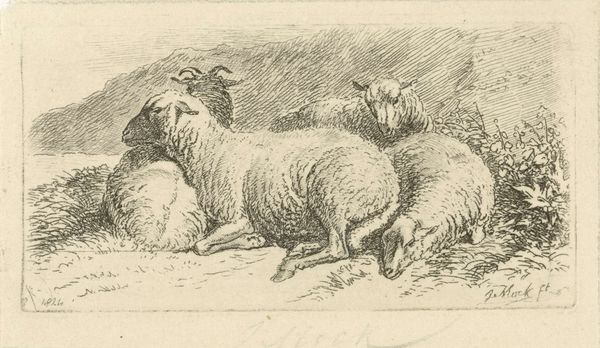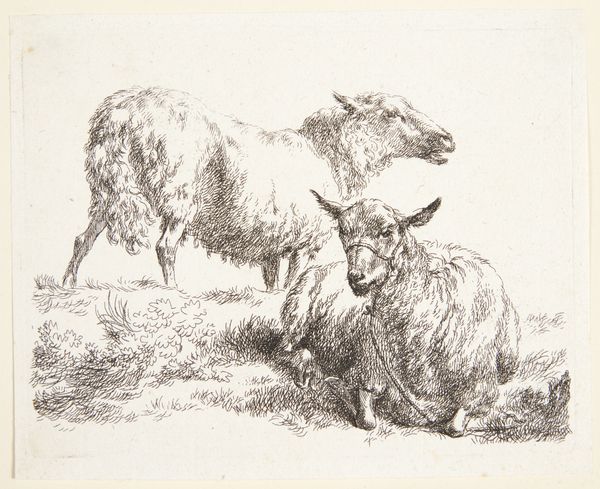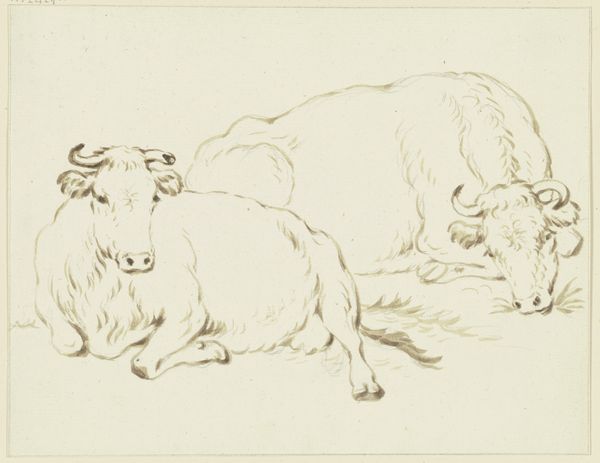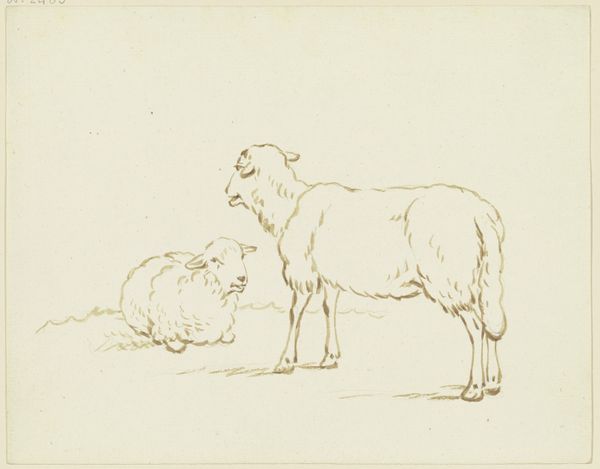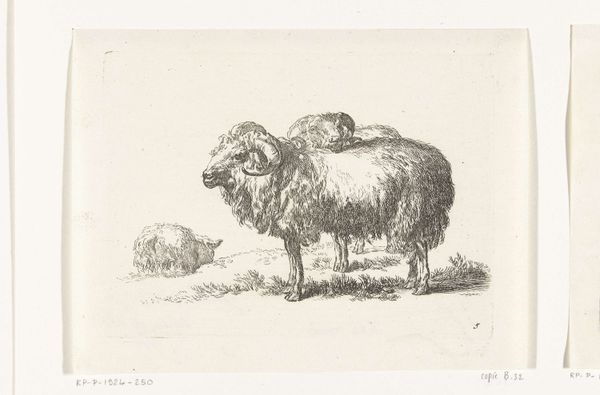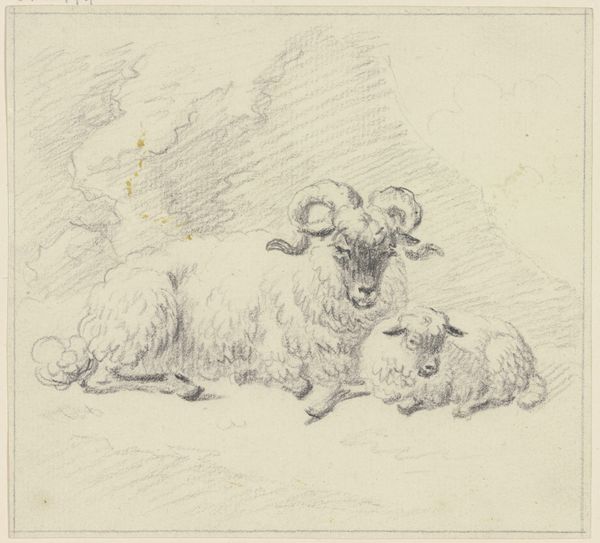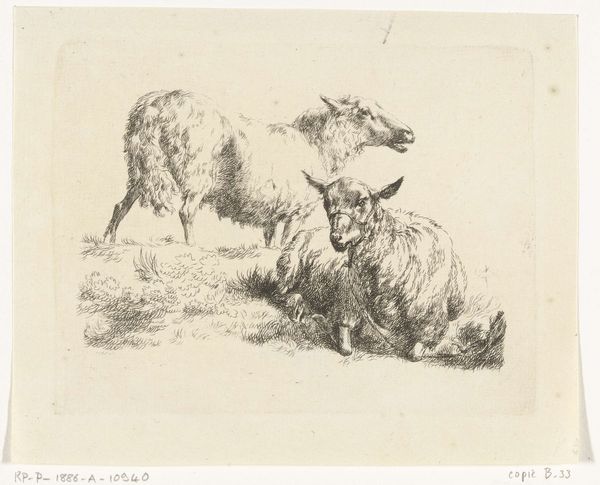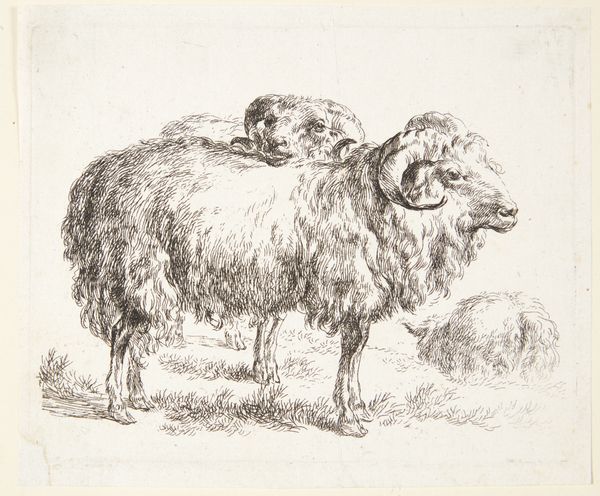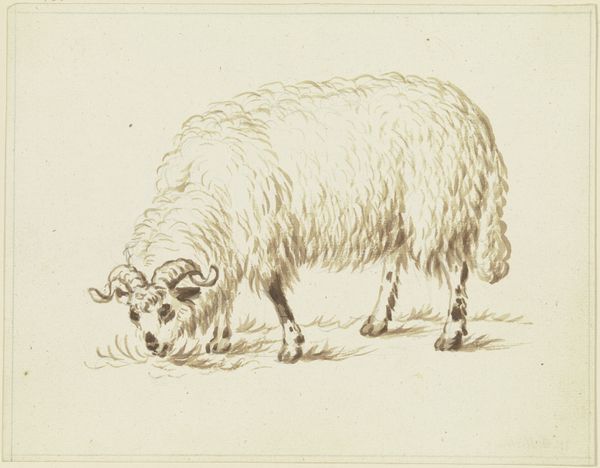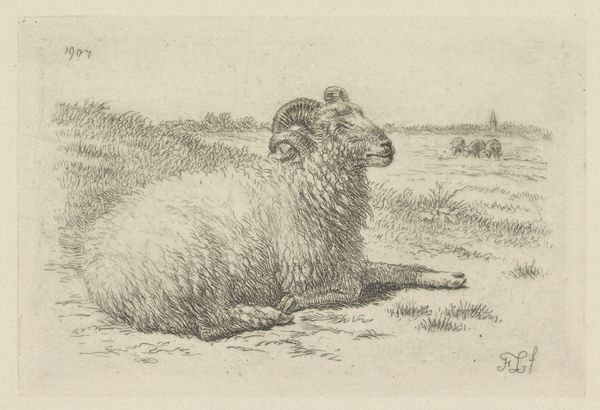
drawing, pencil
#
landscape illustration sketch
#
drawing
#
light pencil work
#
animal
#
pen illustration
#
pencil sketch
#
landscape
#
botanical illustration
#
pen-ink sketch
#
pencil
#
botanical drawing
#
pencil work
#
genre-painting
#
botanical art
#
realism
#
initial sketch
Dimensions: height 165 mm, width 294 mm
Copyright: Rijks Museum: Open Domain
Editor: This drawing, titled "Liggende geit voor een staande geit," which translates to "Reclining Goat in front of a Standing Goat," by Jean Bernard, likely made sometime between 1775 and 1833, depicts two goats in a field using only pencil. It’s surprisingly gentle, almost pastoral, yet the details in their fur seem so realistic. What draws your eye when you look at this piece? Curator: What captivates me is precisely that tension you noted, that dance between realism and tenderness. It reminds me of mornings in my grandfather's stables. The raw animal presence rendered with almost…reverence. I think it's about finding beauty in the everyday, the unglamorous. Do you get the feeling it could be illustrating a poem or fable? Editor: I hadn't thought of that, but I see what you mean. There’s something very storybook about it. But were realistic pastoral scenes like this common at the time, or was Bernard trying to say something more? Curator: I wouldn't be surprised if it was connected with that romantic period’s quest to ennoble rural life, finding moral instruction through humble settings. There's such care taken with texture in each goat, you know? The reclining goat’s dense fleece becomes almost sculptural, a real tactile achievement rendered just with pencil. Don’t you just want to reach out and *feel* it? Editor: It definitely makes you appreciate the simple beauty of the scene! Looking closer, I see so much variety even in the short bits of grass. It’s making me rethink what "realism" even means in art. Curator: Exactly! It’s a conversation between observing the physical world and feeling its emotional impact. What can one learn of oneself when contemplating grazing ruminants? That’s the quiet question I keep coming back to, every time I see this, in its deceptively gentle way.
Comments
No comments
Be the first to comment and join the conversation on the ultimate creative platform.

